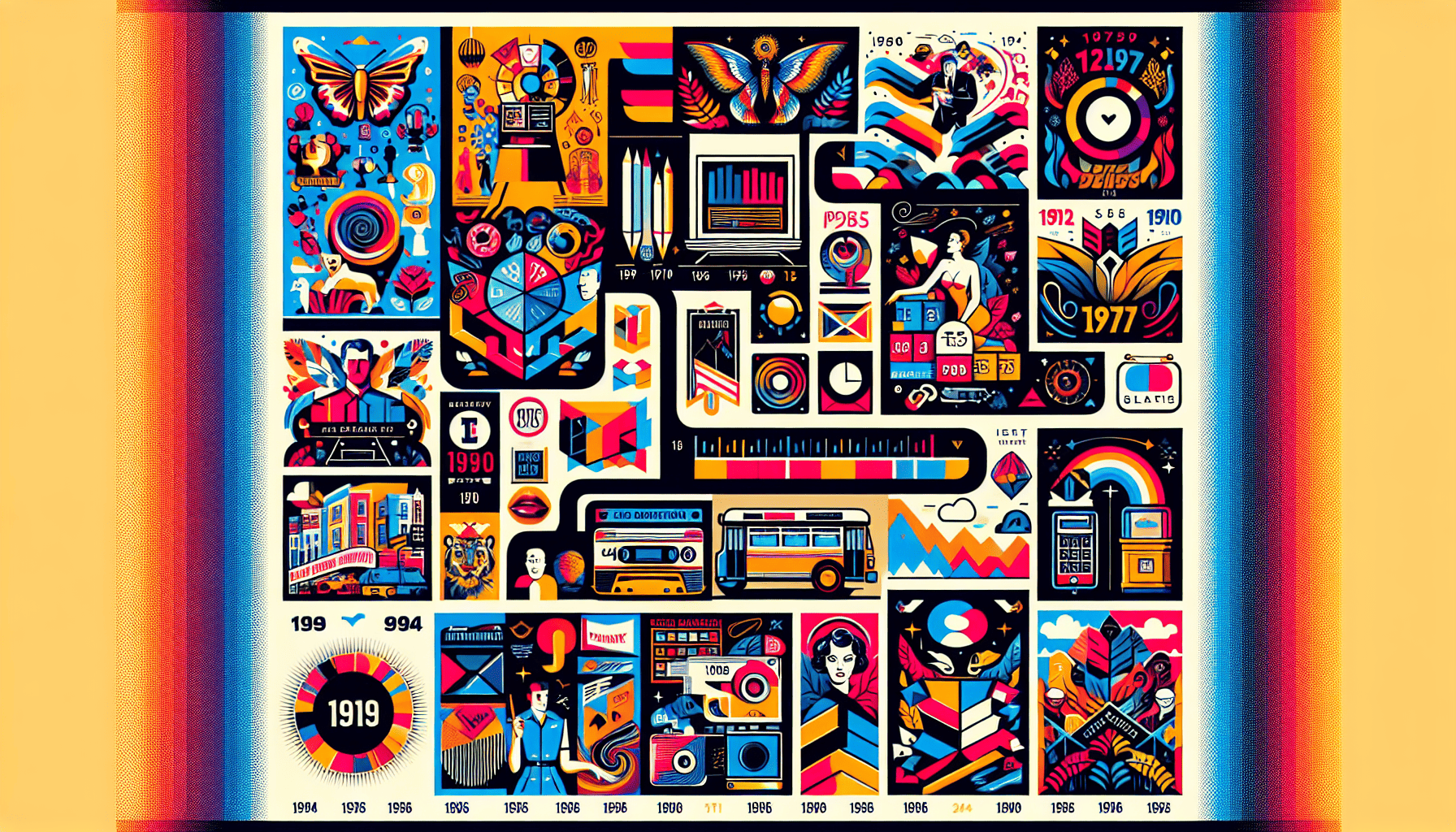Graphic design has always been a dynamic and evolving field, reflecting the cultural, technological, and social changes of its time. From the early days of print to the digital age, the transformation of graphic design styles illustrates a fascinating journey of innovation and creativity that has significantly influenced how we perceive and communicate visual information.
The Early Beginnings
The origins of graphic design can be traced back to the early 20th century, a time when the concept of design as a distinct profession began to take shape. Influences from the Art Nouveau movement brought about intricate, organic lines and floral patterns, as seen in the works of artists like Alphonse Mucha. This era was characterized by a blend of artistry and functionality, setting the stage for graphic design as a medium of communication beyond mere aesthetics.
Modernism and The Bauhaus Influence
As the world plunged into the complexities of industrialization, the 1920s and 1930s saw the rise of Modernism in graphic design. The Bauhaus school in Germany was pivotal in championing this movement, advocating for designs that were both functional and aesthetically pleasing. Emphasis was placed on minimalism, geometric shapes, and typography, distancing from ornate designs and focusing on simplicity and clarity. This era laid the foundation for contemporary design philosophies by promoting the idea that form should follow function.
The Mid-Century and Pop Art Enthusiasm
Post-World War II, the economic boom led to the explosion of consumerism, significantly impacting graphic design. The Mid-Century Modern aesthetic entered, characterized by bold colors, clean lines, and a certain playful elegance. Graphic designers started experimenting with photomontage and abstract forms, drawing inspiration from the emerging Pop Art movement. Figures like Andy Warhol and Roy Lichtenstein brought a sense of irony and satire, challenging traditional notions of art and consumer culture.
The Digital Revolution and Postmodernism
The late 20th century introduced digital technology, revolutionizing graphic design. Design tools shifted from manual to digital, with software like Adobe Illustrator and Photoshop defining new possibilities. This era championed Postmodernism, which embraced eclectic styles, pastiche, and an acceptance of chaotic designs that mixed historical references with a contemporary twist. This period also saw the democratization of design, where technology made high-quality design accessible to a broader audience.
The 21st Century: Design in the Digital Age
Today, graphic design is at an intersection of technology and creativity. The advent of the internet and mobile devices has led to responsive design practices, where visual communication is tailored to diverse screens and platforms. Current trends highlight the importance of user experience (UX) and user interface (UI) design, integrating functionality with aesthetic pleasure.
Eco-conscious design has also come to the fore in recent years, emphasizing sustainability and social responsibility. Designers are increasingly using techniques that promote minimal waste, opting for digital mediums over print and focusing on messages that inspire environmental action.
Future Trends and Innovations
With the rise of artificial intelligence, virtual reality, and augmented reality, graphic design continues to expand its horizons. These technologies promise to transform static visuals into immersive experiences, changing how audiences interact with design. Motion graphics, 3D modeling, and animation are becoming integral to engaging storytelling.
As we move forward, the role of graphic design will undoubtedly evolve alongside emerging technologies and cultural shifts. What remains constant is its core objective: to communicate messages effectively and artistically, crafting a visual narrative that resonates with and inspires its audience.
In summary, the evolution of graphic design styles is a testament to the field’s adaptive nature and its ability to capture the essence of each era. By embracing new trends and technologies, graphic design has not only survived the test of time but also thrived, continually enhancing the way we perceive the world around us.
